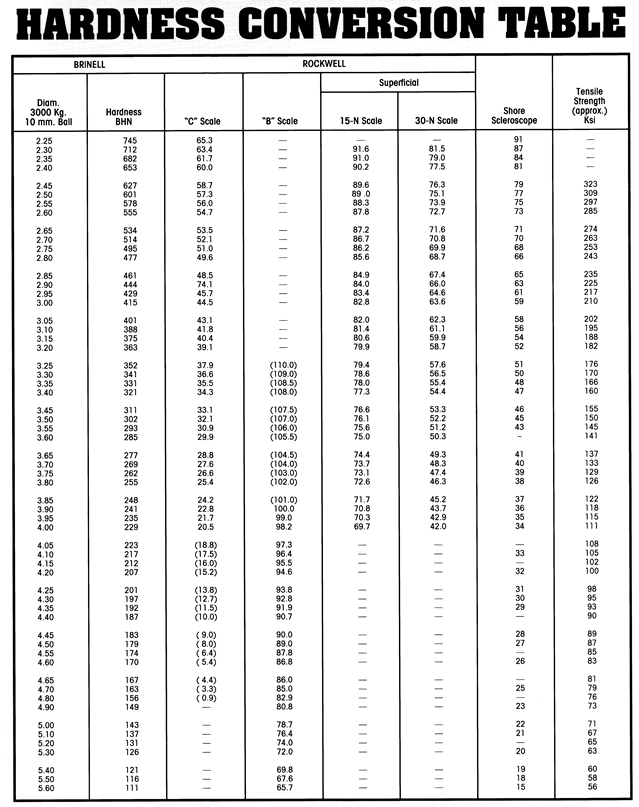
This test, which was devised by the Swedish engineer Dr Johan August Brinell is less accurate than the Vickers method but benefits from not actually requiring any special equipment so long as you can accurately measure the applied load, making it ideal for improvisation. HV = (223xHRC+14500)÷(100-HRC) HRC = (100xHV-14500)÷(223+HV)Ī standard ball is used for the Brinell hardness test on materials with a BHN value of less than 450.

Where d is the diagonal length of the indentation. The applied force is 5, 10, 20, 30, 50 or 120kg 50kg being the norm. The Vickers number (HV) is the ratio of the force (F) and the square of the depth of penetration (D). The Vickers test is based upon the indentation of a diamond pyramid, with an included peak angle of 136°, for a period of 30 seconds. by Robert Smith and George Sandland is very accurate when compared with the Brinell and Rockwell methods and may be used on sheet material but the equipment is expensive and takes longer to operate accurately. This test, which was devised at Vickers Ltd. The hardness number is based upon the depth of penetration.

The operational procedure is to apply an initial load of 10kg followed by the main test load which is held for 30 seconds. It has numerous measurement scales: A to G, 15, 30 & 45 and measures the depth of penetration of a diamond spherocone with tip diameter of 0.2mm and an included angle of 120° or a steel ball ranging in diameter from 1.5mm to 10mm all of which can be applied with a load ranging from 15kg to 3000kg. It is more accurate and less damaging than the Brinell method, simpler and quicker to operate than the Vickers method and more reliable than the Shore hardness test. Hugh and Stanley Rockwell together invented this hardness testing method in the USA in the mid 19th century, which involves no calculations and the hardness number is read from a dial or digital display. # except Rockwell 'B' which is compared with Brinell std. The following Tables include documented values, calculated values and associated errors for each set of formulas (see Comparison Charts at the bottom of this page).ĬalQlata has included all the following conversion formulas in a hardness conversion calculator Rockwell C (HRC)ĬalQlata has compared the most commonly used hardness measurement systems with Rockwell 'C' #, which is regarded as the most ubiquitous hardness test method and its Grade C the most commonly used scale.

Our aim was to keep errors within ☐.5% throughout the range although the variable nature of the documented data has made this a little challenging (see Shore below). These formulas and their accuracy can be found in the following Tables. CalQlata has therefore developed its own formulas⁽¹⁾ that it can use internally with confidence.
#VICKERS TO ROCKWELL CONVERSION VERIFICATION#
There are a number of hardness comparison calculation methods available in many publications the accuracy of which is variable and difficult to gauge without a good deal of verification work. It is provided to help you compare hardness scales with a reasonable degree of confidence. This page is not a universal hardness comparison facility for its own sake.


 0 kommentar(er)
0 kommentar(er)
